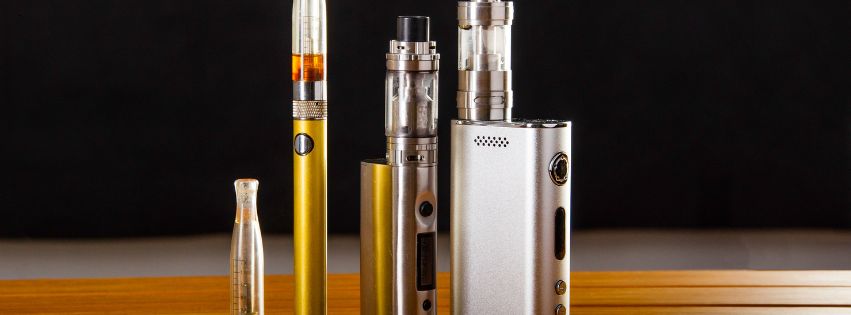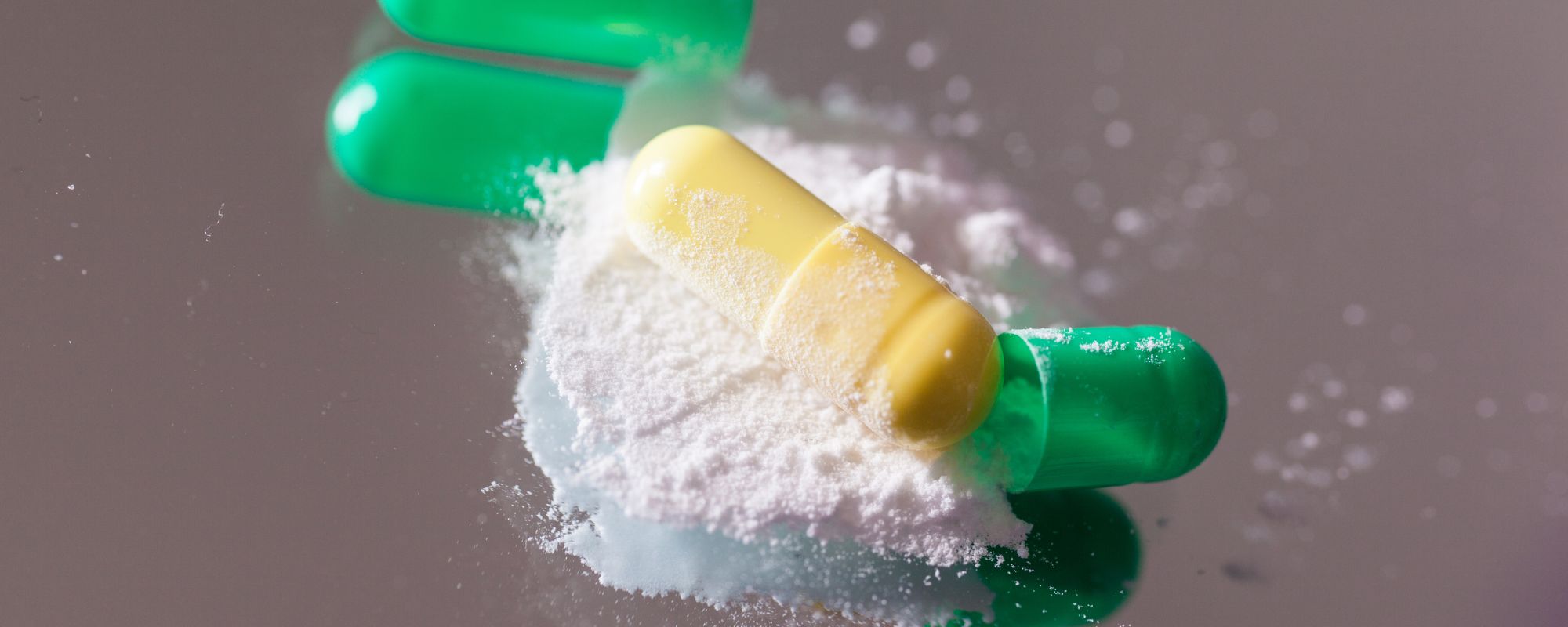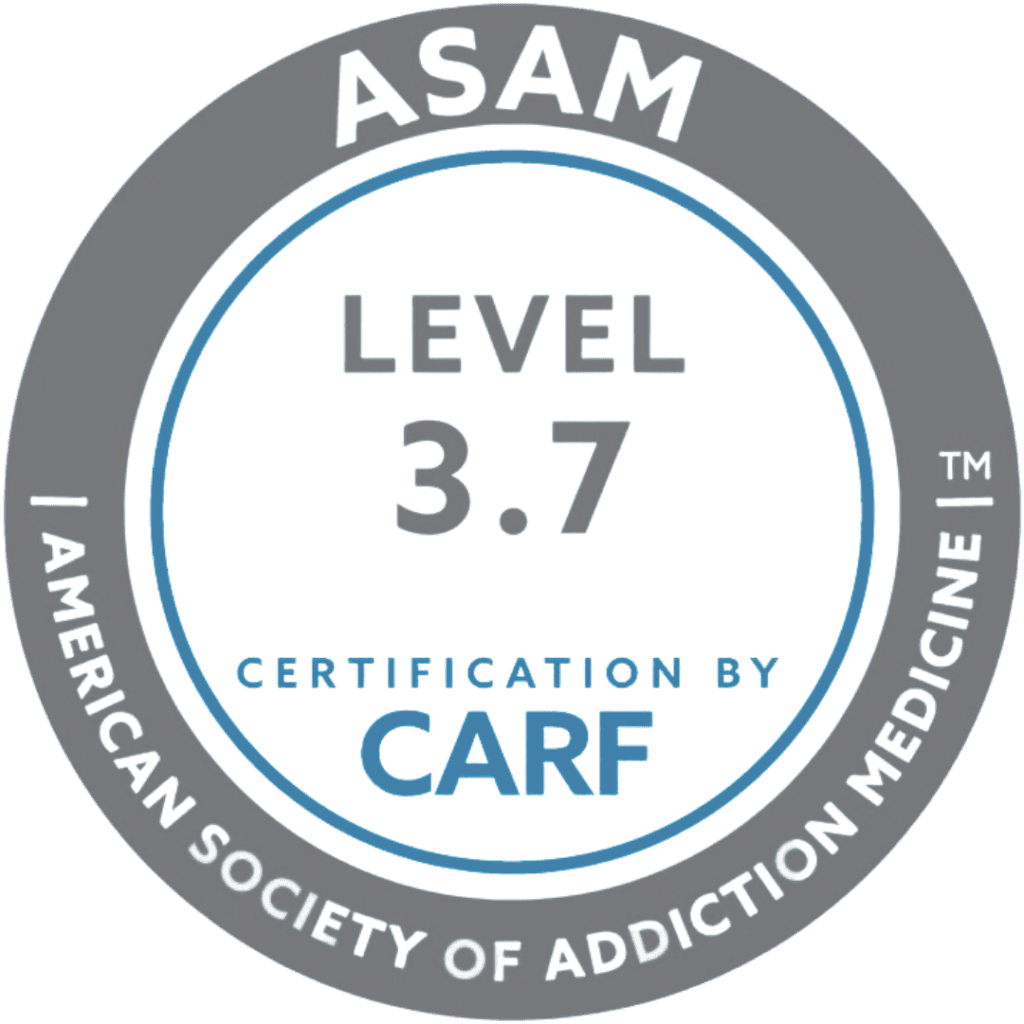More and more states across the country are decriminalizing marijuana, giving people more access to cannabis than ever before. It’s given dispensaries ample opportunities to diversify their product lines, opening the door to everything from edibles to tinctures to drinks infused with THC, cannabis’ main psychoactive ingredient. Vaping is just one method that’s seen a surge in popularity, especially among young people; according to statistics from the U.S. Drug Enforcement Agency, it increased just over 10% for 12th-grade students between 2017 and 2023, with just under one-fifth of high school seniors reporting vaping marijuana two years ago.
It may seem like a modern, risk-free option to smoking marijuana — perceived as a cleaner, safer, more discreet and convenient alternative. But is vaping marijuana safe? Concerns about brain and lung health, and even the dangers of the vape devices themselves, cannot be ignored.
Cannabis use disorder is still a very real problem that vaping marijuana plays a role in. If you or a loved one frequently vapes marijuana, let’s take a closer look at the risks involved.
What Does Vaping Marijuana Mean?
Since the technology was developed more than 20 years ago, vaping has effectively become the new smoking — it’s a method of inhaling a substance through a handheld, battery-powered electronic device (an e-cigarette for nicotine).
There are a few types of marijuana vaping devices:
- Vape pens are slim, portable devices that typically use pre-filled or refillable cartridges with THC oil or distillates. They’re easy to use discreetly indoors or in public places where smoking is disallowed.
- Dab pens are small, handheld devices that use highly concentrated cannabis extracts. They’re made from butane and known as butane hash oil (BHO). Dabs’ different textures can range from a sticky liquid to a brittle, glass-like solid.
- Vaporizers vary in appearance and size — some resemble USB drives or larger, tank-style devices. Unlike dab pens, they are more versatile and can be used with multiple forms of marijuana, from concentrates to dried flowers and liquids.
Most marijuana vape pens include a battery that powers the device, a heating element that warms the THC, and a chamber or cartridge that holds the THC product.
Instead of burning marijuana like traditional smoking, a vape pen heats it at a lower temperature. Vaping produces no smoke, just vapor, allowing users to use it discreetly indoors or in public places where smoking is disallowed.
How Else Is Marijuana Used?
Recent reports tell us that there’s been a marked increase in sales of marijuana vaping products — but it’s just one way how people consume marijuana:
- Smoking marijuana leaves from a joint (a rolled marijuana cigarette) or through a bong (a large glass-tubed pipe) are the most traditional methods.
- Edibles, like cannabis-infused gummies and other food (like taffy or brownies) or beverages, like THC-infused seltzers, have become more widespread.
- Tinctures and oils can also be used to supplement edibles or taken sublingually (under the tongue with a medicine dropper).
- Then there are THC- or CBD-based topicals, initially used with the legalization of medical marijuana for localized pain relief.
However, although vaping is the newest form of consuming marijuana, it’s one of the most popular, presumably because it mirrors the potent delivery and effects of smoking cannabis. In a recent study published by the National Institutes of Health (NIH), nearly 13% of respondents reported that they smoked marijuana most: 6%, edibles; 4.7%, vaping; 1.9%, concentrates; and 0.8%, topicals.
The study also noted that while smoking remains the most predominant form of taking marijuana, smoking and edibles were the most popular combination, followed by alternating smoking and vaping.
Is Vaping Marijuana Legal?
The legality of vaping marijuana all depends on where you live, with marijuana laws varying from state to state.
As of this writing, Washington, D.C., and 24 states see recreational marijuana (which includes vaping) fully legalized and decriminalized: Alaska, Arizona, California, Colorado, Connecticut, Delaware, Illinois, Maine, Maryland, Massachusetts, Michigan, Minnesota, Missouri, Montana, Nevada, New Jersey, New Mexico, New York, Ohio, Oregon, Rhode Island, Vermont, Virginia and Washington.
In some states, marijuana legality remains mixed, allowing only for medical use with a doctor’s prescription, while strictly illegal in others.
Note that state laws may also vary regarding age restrictions and the amount of marijuana you can possess at a time.
Is Vaping Marijuana Better Than Smoking?
Vaping marijuana vs smoking — are there advantages to the former against the latter? One pressing concern in states (where cannabis has and hasn’t yet been legalized) is the present danger of unregulated, black-market THC vaping cartridges laced with toxic ingredients.
In reports, some unlicensed vape shops selling illegal cartridges — not tested or approved for sale — were found to contain some mixture of pesticides exceeding legal amounts, mainly myclobutanil, a fungicide that, when burned, can turn into hydrogen cyanide.
This prompted complaints to cannabis regulatory sources from users who complained of vaping THC side effects like headaches and nausea.
Looking for quality treatment for substance abuse and mental health that’s also affordable? Aliya Health Group's treatment facilities accept most major insurance providers. Get a free insurance benefits check now!
Check Your CoverageHealth Risks of Vaping
It’s well documented that smoking marijuana can cause damage to one’s lungs, unlike smoking tobacco.
“Research shows that smoking marijuana causes chronic bronchitis and marijuana smoke has been shown to injure the cell linings of the large airways, which could explain why smoking marijuana leads to symptoms such as chronic cough, phlegm production, wheeze and acute bronchitis,” notes a report by the American Lung Association.
What are the real health risks of vaping marijuana, though? Many users may advocate that it’s a healthier alternative, at least to the extent that vaping marijuana presents fewer health risks because its vapor eliminates most of the dangerous toxins produced from inhaling smoke.
But it really boils down to a lesser-of-two-evils argument. While it may not carry the same risks as smoking, vaping marijuana creates a whole new set of health concerns.
“No two vape brands are alike,” notes an NPR study. “There is a huge variety of products available on shelves today in the states where marijuana is legal. These vapes contain many other chemicals besides the drug itself that make each product different. And often, it’s those other chemicals that prove problematic.”
Short-Term Risk of Vaping
Vaping cannabis to get high is just one of the effects of marijuana, but it carries its own short-term vaping THC side effects. A study conducted by Johns Hopkins University researchers brought together 17 volunteers to smoke or vape cannabis and reported, up to eight hours later, feelings of sickness, anxiety, hunger, sleepiness, restlessness, racing heart, dry mouth and eyes, coughing, and impaired memory.
“Participants who vaped 25 milligrams of THC reported about a 7% higher score on average for anxiety and paranoia, compared with people who smoked the same amount of the compound,” notes the study. “Those who vaped any dose of THC also reported higher levels of dry mouth and dry eyes than those who smoked it.”
Study participants who vaped marijuana instead of smoking also showed higher levels of motor skill impairment when taking a computer test requiring them to track a square on the screen while also monitoring numbers in each of the screen’s corners.
Long-Term Risks of Vaping
The U.S. Centers for Disease Control (CDC) recently published cautionary warnings about the presence of vitamin E acetate in many vaping marijuana products, black market and legal, which the CDC has linked to a rash of hospitalizations and deaths from EVALI, an acronym for E-cigarette or Vaping, product use–Associated Lung Injury.
According to the NIH, EVALI can be fatal, causing 68 deaths as of 2023. In an NIH survey of some hospitalized EVALI patients, up to 76% needed additional oxygen, 22% non-invasive ventilation and 26%, intubation and ventilation.
And the American Lung Association states that there’s enough research to indicate that using vape pens to inhale cannabis concentrates or liquids can pose the same respiratory problems as using e-cigarettes. Dabbing may also pose respiratory issues and lung injuries.
Additional long-term health effects from vaping marijuana (or nicotine) can include:
- Bronchiolitis obliterans, aka “popcorn lung,” a permanent scarring of the lungs caused by diacetyl, a chemical used in some vape cartridge flavorings
- Organ damage to the brain and heart
- Cancer linked to certain vaping e-chemicals
- An increased likelihood of developing or worsening asthma
Then there are very real and unpredictable dangers from the vaping devices themselves.
“Some devices might explode, resulting in burns and other injuries,” notes the U.S. Drug Enforcement Agency. (The first e-cigarette death was reported in 2018, when a user’s vape exploded, killing them when shrapnel from the device entered their brain.)
“Most vaping devices contain and release a number of potentially toxic substances, including metals and volatile organic compounds from the devices and solvents used,” says the DEA. “Some of these have been linked to cell and DNA damage.”
Can Someone Get Addicted to Vaping Marijuana?
Surveys show that more than half (56%) of people believe marijuana is socially acceptable, and it feeds into the myth that it isn’t addictive. But cannabis use disorder is real, and the effects of marijuana can leave numerous adverse impacts on your health and well-being.
Can you get addicted to vaping marijuana? Vaping may increase the risk of getting addicted due to the potency inherent to vape pens. According to the NPR study, THC oil can reach a concentration of 95% or more. Compare that to regular cannabis flower, which contains between 17% to 18% THC.
This poses significant problems for young people who assume that vaping is safer or less addictive than smoking — a demographic more vulnerable to becoming addicted and developing health problems from vaping marijuana.
“Cannabis is considered by youth to be one of the least harmful psychoactive substances, in part because it is often perceived as more ‘natural’ than other substances,” says the NIH study.
“Vaping is not considered safe, especially for teens and young adults, since the adolescent brain is still developing and inhaling any substance through these devices may be harmful,” notes the DEA study.
Get confidential help from our addiction and mental health treatment facilities located across the United States. Call to join one of our quality programs today!
Speak With Our Admissions TeamAre Other Forms of Marijuana Addictive?
Cannabis carries addictive potential in all forms, and excessive marijuana use can lead to dependence and eventual cannabis use disorder. Studies show that nearly 10% of people who begin smoking marijuana will become addicted and that between 22% and 30% of marijuana users have the disorder.
“The strongest predictor of cannabis use disorder is how often someone uses it, but other factors, like a family history of drug use and how long a person has been using cannabis, can also play a role,” says the National Institute on Drug Abuse.
Find Help for Marijuana Use
Substance use disorders, regardless of the drug, have one thing in common — they can be treated, and you can carve out a healthier direction in life free of addiction. Marijuana addiction is no exception.
By signing up for treatment, you or a loved one can break free of addiction. From the beginning of rehab, marijuana detox — with the full, compassionate aid of experienced staff — can help you to withdraw from the drug with minimal symptoms and side effects. Rehab at one of Aliya’s treatment centers doesn’t just help you stop using a drug but to understand the nature of why you became addicted, what compelled you to use marijuana, and how you can live life without the need to smoke or vape. Through talk therapy, individually and in a group setting, help and support are here.
Entering treatment for vaping marijuana is a big step, and we’re here, 24/7, to answer your questions. Don’t hesitate to contact us today to get answers about entering rehab, inpatient and outpatient treatment, cost, insurance coverage, and more. You can change your life with one phone call.
- https://disa.com/marijuana-legality-by-state
- https://www.justthinktwice.gov/news-statistics/2024/01/16/marijuana-vaping-spikes-double-digits-12th-graders
- https://www.uptodate.com/contents/cannabis-use-and-disorder-epidemiology-pharmacology-comorbidities-and-adverse-effects
- https://www.ncbi.nlm.nih.gov/books/NBK538684/#:~:text=The%20first%20device%20in%20the,atomizing%20cigarette%20(Hon%202013).
- https://www.npr.org/2025/02/03/nx-s1-5246302/vape-marijuana-weed-pesticides-chemicals
- https://pmc.ncbi.nlm.nih.gov/articles/PMC6296858/#:~:text=A%20total%20of%2012.9%25%20of,forms%20in%20the%20past%20year.
- https://www.iihs.org/topics/alcohol-and-drugs/marijuana-laws-table
- https://www.lung.org/quit-smoking/smoking-facts/health-effects/marijuana-and-lung-health#:~:text=Smoking%20marijuana%20can%20harm%20more,diseases%2C%20such%20as%20HIV%20infection.
- https://www.cnn.com/2019/12/24/health/black-market-vapes/index.html
- https://respiratory-therapy.com/public-health/smoking/vaping-ecigarettes/hydrogen-cyanide-found-in-black-market-vapes/
- https://archive.cdc.gov/www_cdc_gov/tobacco/basic_information/e-cigarettes/severe-lung-disease.html
- https://www.ncbi.nlm.nih.gov/books/NBK560656/
- https://pmc.ncbi.nlm.nih.gov/articles/PMC7757764/
- https://www.hopkinsmedicine.org/news/newsroom/news-releases/2018/12/vaping-cannabis-produces-stronger-effects-than-smoking-cannabis-for-infrequent-users
- https://www.npr.org/2025/02/03/nx-s1-5246302/vape-marijuana-weed-pesticides-chemicals
- https://my.clevelandclinic.org/health/treatments/21162-vaping
- https://pmc.ncbi.nlm.nih.gov/articles/PMC7205087/
- https://drugabusestatistics.org/marijuana-addiction/
- https://www.yalemedicine.org/conditions/marijuana-use-disorder
- https://nida.nih.gov/research-topics/cannabis-marijuana#cannabis-addictive
















